학습내용
PDP, Shap의 장점
모델의 설명력과 복잡도는 trade off관계에 있다고 말할 수 있습니다.
즉, 모델이 복잡해질수록 성능은 좋아지지만 모델의 설명력은 떨어집니다.
PDP, Shap은 이러한 부분을 일부 해결해 줄 수 있는 방법으로 모델에 사용된 feature들이 결과에 어떻게 영향을 미치는지에 대한 정보를 줍니다.
Partial Dependence Plot(PDP)
특정 feature와 target 사이의 관계를 알기 위함, 특정 feature의 값을 변화시키며 target 값의 변화를 관찰
- 한 특성과 target의 관계
import sklearn
import xgboost
import shap
from sklearn.model_selection import train_test_split
shap.initjs();
df, target = shap.datasets.boston()
X_train,X_test,y_train,y_test = train_test_split(df, target, test_size=0.2, random_state=2)
model = xgboost.XGBRegressor().fit(X_train, y_train)
### Draw PDP plots ###
from pdpbox.pdp import pdp_isolate, pdp_plot
import matplotlib.pyplot as plt
features = ['LSTAT', 'CRIM', 'NOX', 'RM']
for i, feature in enumerate(features):
isolated = pdp_isolate(
model = model,
dataset = X_test,
model_features = X_test.columns,
feature = feature,
grid_type = 'percentile', # default='percentile', or 'equal'
num_grid_points = 100 # default=10, 한 샘플당 변화시키는 point 수
)
pdp_plot(isolated,
feature_name = feature,
plot_lines = True, #ice plots
frac_to_plot = 10, #표시하는 ice 개수? 비율로도 줄 수 있고 정수로도 줄 수 있음, 가끔에러가 나는데 그건 왜그럴까?
plot_pts_dist = True #rug plot 그려줌
)
plt.title(feature)
plt.show()
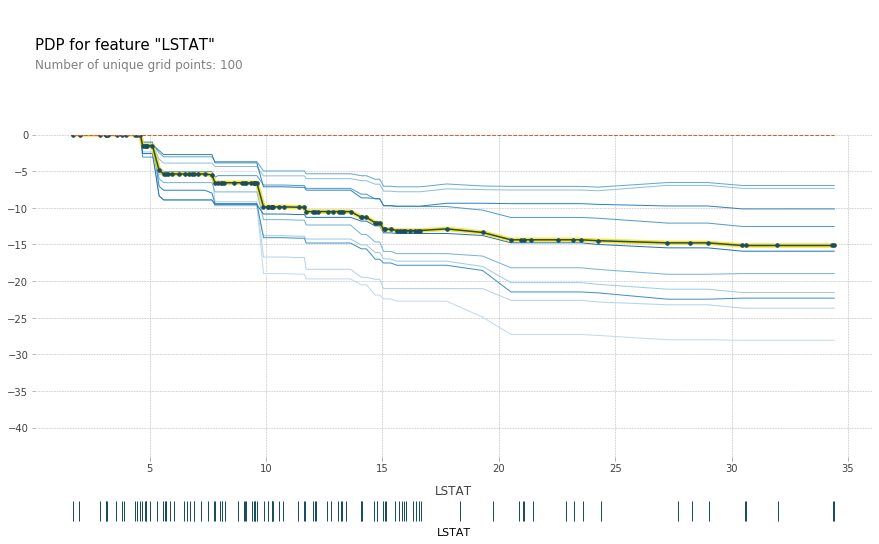
ice : 한 ICE 곡선은 하나의 관측치에 대해 관심 특성을 변화시킴에 따른 타겟값 변화 곡선이고 이 ICE들의 평균이 PDP
grid point : 한 샘플당 변화시키는 point 수
- 두 특성과 target의 관계
- 2D로 표현
from pdpbox.pdp import pdp_interact, pdp_interact_plot
features = ['LSTAT', 'CRIM']
interaction = pdp_interact(
model = model,
dataset = X_test,
model_features = X_test.columns,
features = features
)
pdp_interact_plot(interaction,
plot_type = 'grid',
feature_names = features
);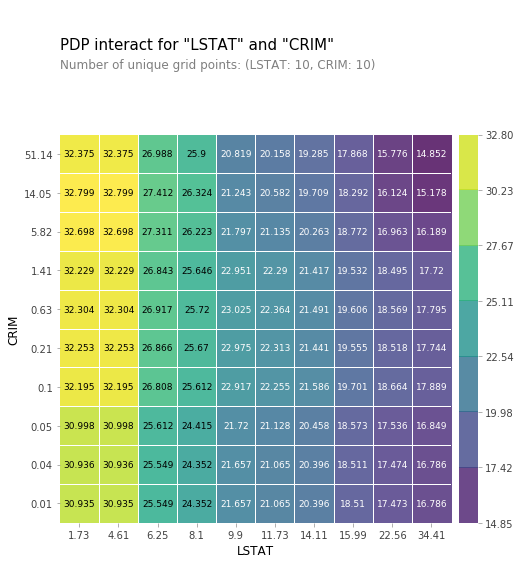
- 3D로 표현
pdp = interaction.pdp.pivot_table(
values = 'preds',
columns = features[0],
index = features[1]
)[::-1]
import plotly.graph_objs as go
surface = go.Surface(
x=pdp.columns,
y=pdp.index,
z=pdp.values
)
layout = go.Layout(
scene = dict(
xaxis = dict(title=features[0]),
yaxis = dict(title=features[1]),
zaxis = dict(title='target')
)
)
fig = go.Figure(surface, layout)
fig.show()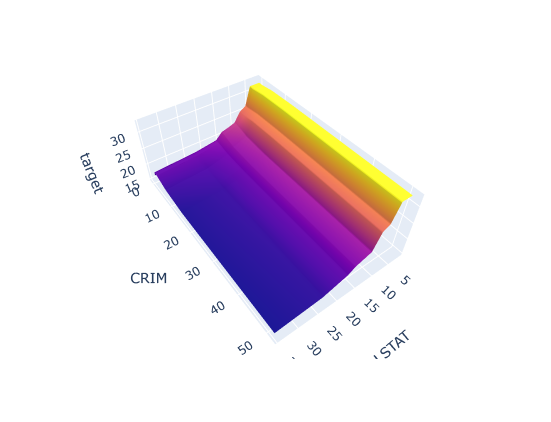
Shap
게임이론에 바탕을 두고 있으며 특정 feature를 제외했을때의 model결과와 그렇지않았을때의 model결과를 비교하여 특정 feature의 기여도를 계산하는 방식
샘플 1개에 대해서 계산된다.
, bar : permutation importance보다 더 정확하다고 할 수 있음, 이유는 밑에
- force plot
explainer = shap.TreeExplainer(model)
shap_values = explainer.shap_values(X_test)
### Draw SHAP plots ###
shap.initjs()
shap.force_plot(
base_value = explainer.expected_value,
shap_values = shap_values,
features = X_test
)
- summary plot(분포)
shap_values = explainer.shap_values(X_train)
shap.summary_plot(
shap_values = shap_values,
features = X_train)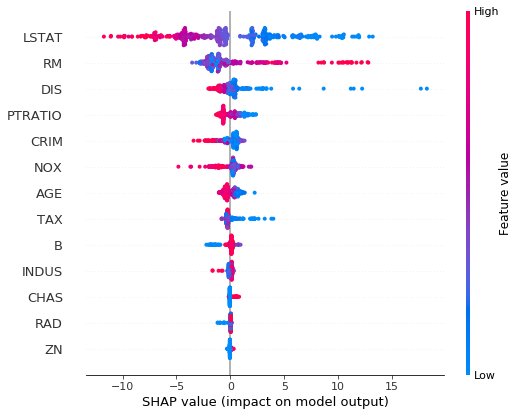
해석 : LSTAT같으 경우 feature의 값이 작아질수록 target에 양의 영향을 끼치고 있음을 알 수 있다.
- summary plot(바이올린)
shap.summary_plot(
shap_values = shap_values,
features = X_train,
plot_type = 'violin'
)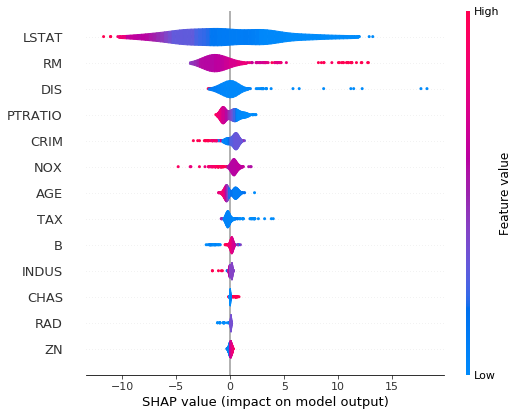
- summary plot(bar)
shap.summary_plot(
shap_values,
features = X_train,
plot_type = 'bar'
)
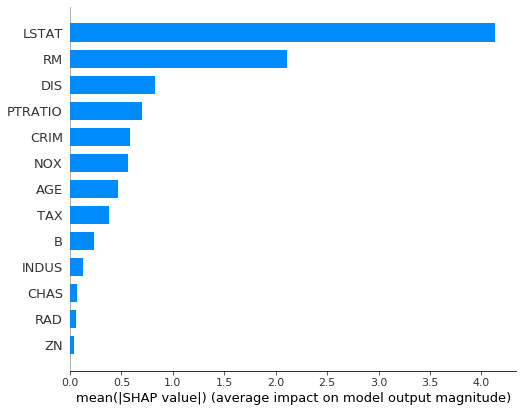
이론 상으로는 permutation importance보다 우수함
이유
1. permutation은 음의 관계에 대해서는 생각을 안함
2. permutation은 변수들이 서로 영향을 주는 경우에는 부정확함
정리
서로 관련이 있는 모든 특성들에 대한 전역적인(Global) 설명
- Feature Importances
- Drop-Column Importances
- Permutaton Importances
타겟과 관련이 있는 개별 특성들에 대한 전역적인 설명
- Partial Dependence plots
개별 관측치에 대한 지역적인(local) 설명
- Shapley Values
